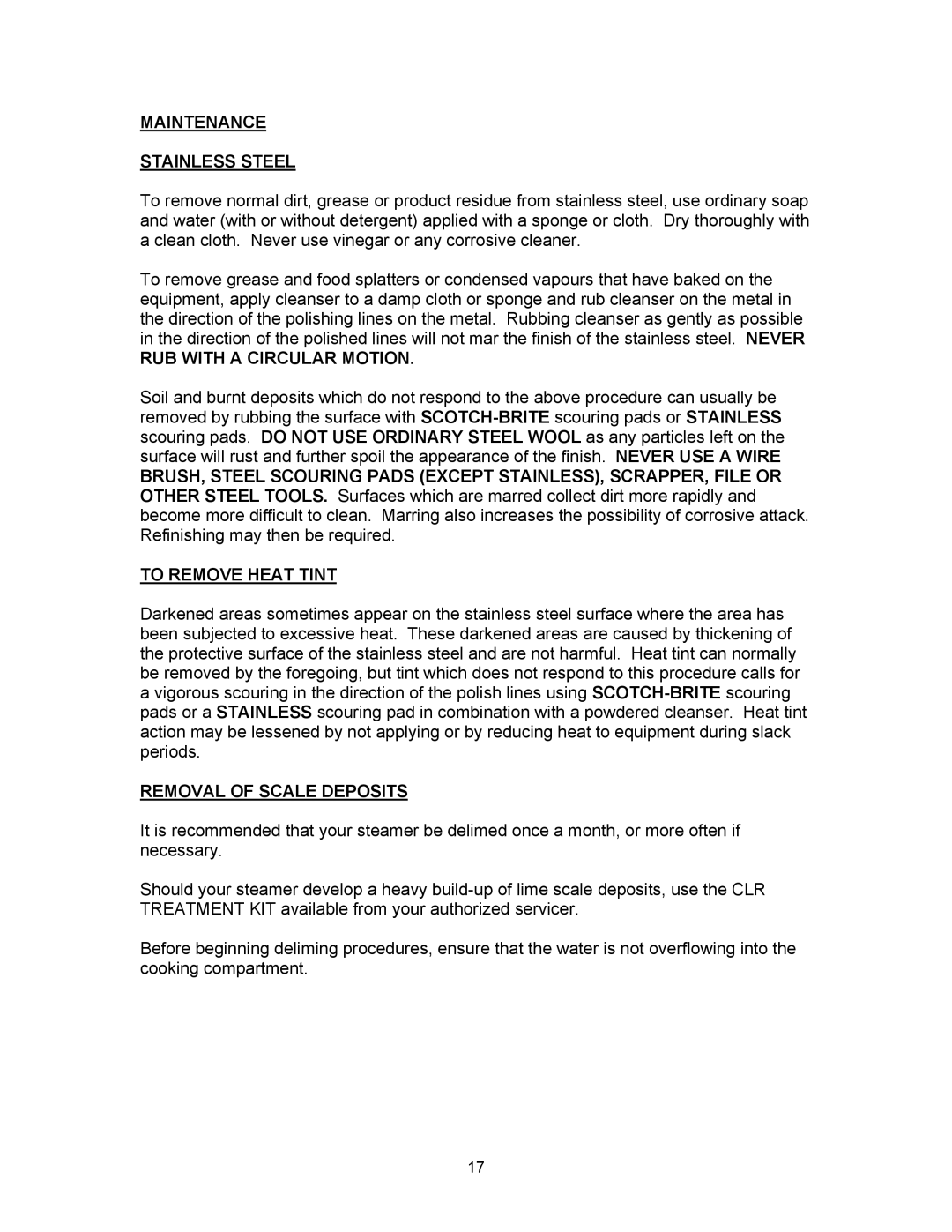MAINTENANCE
STAINLESS STEEL
To remove normal dirt, grease or product residue from stainless steel, use ordinary soap and water (with or without detergent) applied with a sponge or cloth. Dry thoroughly with a clean cloth. Never use vinegar or any corrosive cleaner.
To remove grease and food splatters or condensed vapours that have baked on the equipment, apply cleanser to a damp cloth or sponge and rub cleanser on the metal in the direction of the polishing lines on the metal. Rubbing cleanser as gently as possible in the direction of the polished lines will not mar the finish of the stainless steel. NEVER
RUB WITH A CIRCULAR MOTION.
Soil and burnt deposits which do not respond to the above procedure can usually be removed by rubbing the surface with
BRUSH, STEEL SCOURING PADS (EXCEPT STAINLESS), SCRAPPER, FILE OR OTHER STEEL TOOLS. Surfaces which are marred collect dirt more rapidly and become more difficult to clean. Marring also increases the possibility of corrosive attack. Refinishing may then be required.
TO REMOVE HEAT TINT
Darkened areas sometimes appear on the stainless steel surface where the area has been subjected to excessive heat. These darkened areas are caused by thickening of the protective surface of the stainless steel and are not harmful. Heat tint can normally be removed by the foregoing, but tint which does not respond to this procedure calls for a vigorous scouring in the direction of the polish lines using
REMOVAL OF SCALE DEPOSITS
It is recommended that your steamer be delimed once a month, or more often if necessary.
Should your steamer develop a heavy
Before beginning deliming procedures, ensure that the water is not overflowing into the cooking compartment.
17
